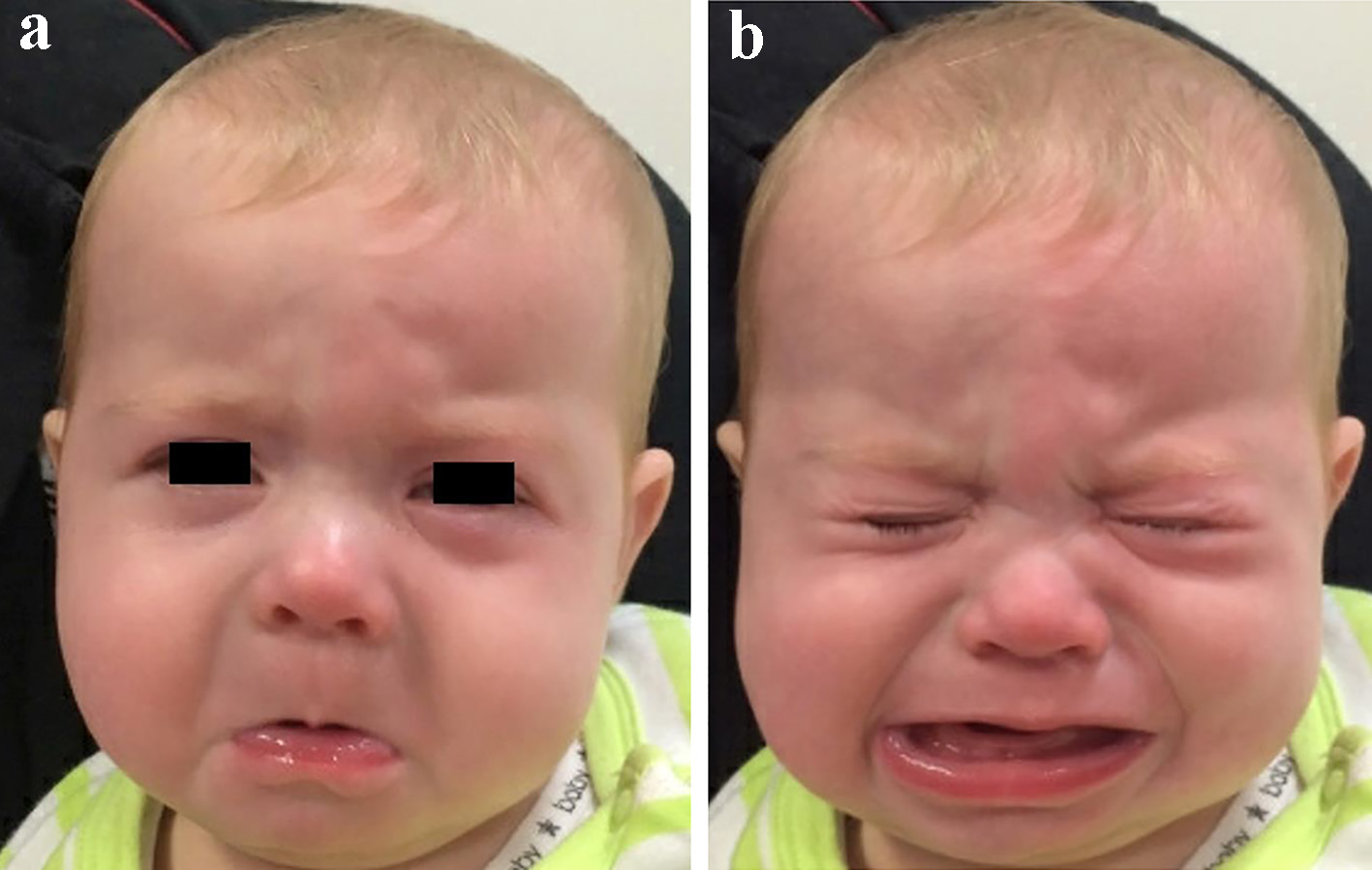
Figure 1. (a) Demarcated erythema of left hemiface. (b) Facial grimacing with impression of intense pain.
| International Journal of Clinical Pediatrics, ISSN 1927-1255 print, 1927-1263 online, Open Access |
| Article copyright, the authors; Journal compilation copyright, Int J Clin Pediatr and Elmer Press Inc |
| Journal website https://www.theijcp.org |
Case Report
Volume 10, Number 2-3, September 2021, pages 49-52
An Infant With Paroxysms of Screaming and Unilateral Lacrimation and Rhinorrhea
Figure

Table
| Headache | Cluster headache | Paroxysmal hemicrania | Short-lasting unilateral neuralgiform headache |
|---|---|---|---|
| aAdapted from Reference [1]. bThe diagnosis of cluster headache and paroxysmal hemicrania requires at least one of these symptoms and/or a sense of agitation or restlessness. Criteria for the diagnosis of a short-lasting unilateral neuralgiform headache do not require a sense of agitation or restlessness. | |||
| Site of pain | Unilateral orbital, supraorbital and/or temporal | Orbital, supraorbital and/or temporal | Orbital, supraorbital, temporal and/or trigeminal |
| Severity of pain | Severe or very severe | Severe | Moderate or severe |
| Duration of pain | 15 - 180 min | 2 - 30 min | One to 600 s as single stabs, series of stabs, or saw-tooth pattern |
| Number of attacks | At least five | At least 20 | At least 20 |
| Frequency of pain | Once every other day to eight times per day | At least five times per day | At least once per day |
| Ipsilateral cranial autonomic features | At least one of the followingb: 1) Conjunctival injection and/or lacrimation; 2) Nasal congestion and/or rhinorrhea; 3) Eyelid edema; 4) Forehead and facial sweating; and 5) Miosis and/or ptosis. | ||